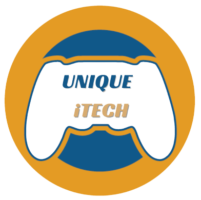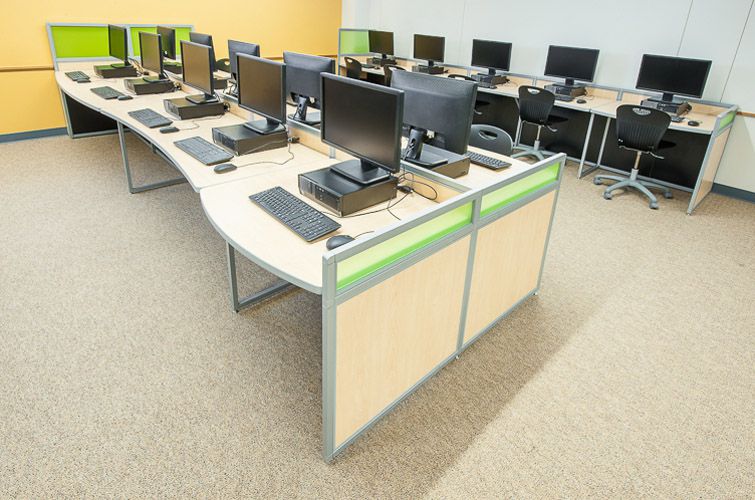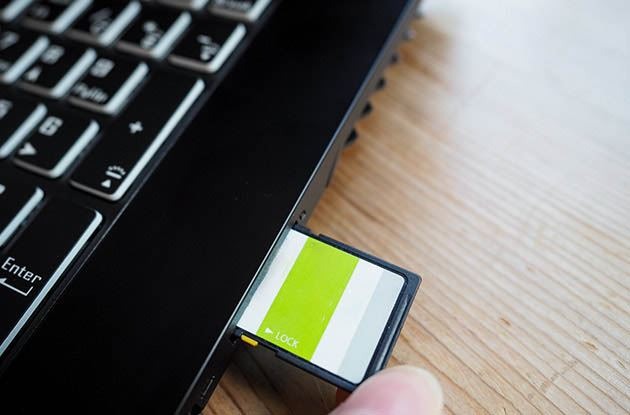Computer labs in schools are relatively new inventions, and we have to remind ourselves of that sometimes. As a standard feature in school computer labs, tables were placed around the perimeter of the room to facilitate power and Ethernet connections. The idea was to fit as many screens as possible into a small space. There was no consideration for student interaction. That’s all changed now. There are countless designs for school computer labs, as the use of computers in education has matured so much. It is no coincidence that we manufacture furniture for computer labs.
Rather than making assumptions, the first step is to determine what kind of learning environment you want to create. There is a choice you can make. In much the same way that classrooms are designed to meet various teaching and learning styles, computer labs can be designed to meet the needs of a variety of learners. The Smith System® computer lab furniture, for example, allows you to limit or encourage student interaction.
Or, you may choose to have the lab support both modalities by splitting them into zones, one dedicated to group work, another to individual study. You may also choose to enable specialized use of computers by dedicating an area to video/multimedia editing and production, or maybe another zone to distance learning.
School Computer Labs
There are many names associated with a school computer lab today. There are several names for learning commons, such as learning labs or digital commons. No matter what the name might be, they all describe spaces that integrate technology with education. As students’ progress in grade levels, this style of blended learning takes many forms.
It is possible for computer labs to be designed within libraries or as independent spaces depending on the school. The school technology hub can be a hub for printing, scanning, copier use, and desktop computers for students and faculty. Mobile carts can also be used as liaisons between classrooms and computer labs.
It is possible to supplement in-person instruction with online learning. The computer lab provides full-size monitors, internet access, and collaborative and individual workstations to facilitate that learning. A desktop computer that can be adjusted can offer ergonomic benefits to students, minimizing the risk of “tech neck” associated with looking at personal devices while working.
Computer Lab Furniture
In computer labs, students study, research, and learn countless hours. It is evident that the computer lab will be the hub of all computing activities in the school with the integration of technology into the curriculum. Students’ productivity can be increased by considering comfort, convenience, space, and collaboration.
Furniture for computer labs can be difficult to find. Before purchasing lab furniture, consider these three factors.
Tables were traditionally positioned along the perimeter of a computer lab. Multiple computers could share the same power source and Ethernet connection by doing this. Teachers could also monitor students with this layout. Using wifi and Ethernet switches as well as computer lab monitoring software, an open-plan lab layout is now possible. Modular furniture can be used in smaller spaces, while fixed and modular furniture can be used in larger spaces.
Appropriate Computer Furniture
It can be challenging to choose the right school furniture, especially for computer workstations and chairs. The right technology furniture is crucial for a school with a high number of students taking computer classes. A comfortable, mobile, and flexible product should have three key features. There is no such thing as one size fits all when it comes to computer furniture. Football players will find their comfort zone to be different from cheerleaders. Ergonomic and comfortable chairs are essential furnishings for computer classes due to concerns about posture and repetitive motion injuries. By using flexible and customization furniture in a computer lab, students of different ages and sizes can be accommodated. Adaptable tables, chairs, and keyboard trays allow students to find the height that suits them best. There should be an adjusted chair back, lumbar support, and a chair height that allows students to rest their feet flat on the floor. Height-adjustable armrests are also recommended. Computer desks should also be capable of managing the enormous amount of wiring connected to computers, peripherals, and networks. It’s not just about comfort.




